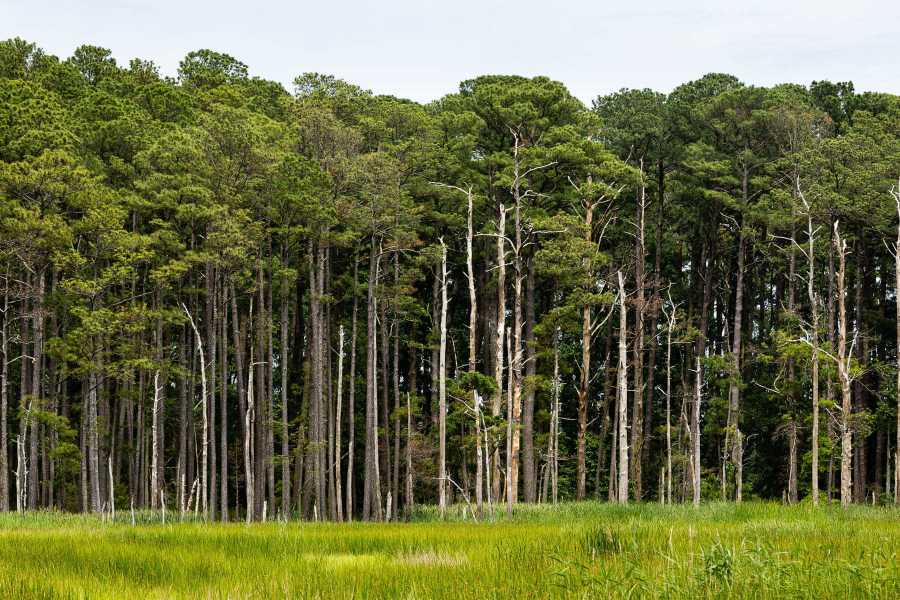How choosing the right tree can help adapt to climate change

As spring gets underway, nature enthusiasts are eager to get outside and plant trees. After you’ve snapped that quintessential photo of the first shovel of dirt while planting a tree, ensure that you will have future photo ops by double-checking that you’ve planted the right tree for that area.
The Chesapeake Bay is one of the most vulnerable regions in the nation to the effects of climate change. The entire watershed is already seeing a variety of impacts, from increasing temperatures and heavier precipitation to more frequent storms and shorter, warmer winters. Each of these stressors can make forests more vulnerable. It is hard to predict the overall impacts when climate and other forest stressors, such as invasive species and pests, interact.
As the climate changes across the globe, here in the Chesapeake watershed, trees and plants are being impacted as much as we are. The “comfort zone” that trees prefer—ideal temperature or rainfall amount—may be shifting north or south as growing seasons and conditions change. The Arbor Day Foundation compared plant hardiness zones between 1990 and 2015, and found the majority of these areas where plants are most likely to thrive in the Chesapeake Bay region are shifting north. This means that plants that grow here now may not have the right conditions to grow here in the future.
If we still plant the same saplings as before, trees may have a lower survival rate in the next 15 years because they can be susceptible to disease, drought and storms. Planting trees that will adapt to changing temperatures or rainier or drier conditions will help build the resiliency of our forests as our climate changes.
Scientists are working to predict which tree species in the United States may be more suitable under future climate conditions. The U.S. Forest Service has published projections for 125 tree species that currently grow in the eastern United States, evaluating their potential to migrate naturally into suitable habitats as the climate changes over the next 100 years.
For the Chesapeake Bay watershed, possible climate “winners” that may be able to cope with future conditions include the oaks (black oak, northern red oak, southern red oak and white oak) and loblolly pine. “Losers” that are not able to survive under future climate conditions include paw paw, paper birch and eastern redbud. The Seedlot Selection Tool helps identify appropriate seeds and planting sites based on future climate projections. Planting tree species that are more likely to survive will help increase forest resiliency.
Forests offer many benefits, including helping to keep air and water clean, increasing recreational value, providing habitat for wildlife and serving as an economic driver. The benefits of forests can be enjoyed by us now, as well as our future generations, if we put practices in place that manage them sustainably and factor in climate change considerations.
By planting the right trees in your area, you are helping to ensure that the forests in your backyard will be resilient for years to come. And it’s not just planting the tree but taking the time and effort to make sure it is properly maintained through the years. Some ways to help your trees grow healthy and strong include monitoring pests and disease outbreak, removing invasive vines and controlling deer populations.
Learn more about how our changing climate is impacting Chesapeake plants and wildlife.

Comments
There are no comments.
Thank you!
Your comment has been received. Before it can be published, the comment will be reviewed by our team to ensure it adheres with our rules of engagement.
Back to recent stories